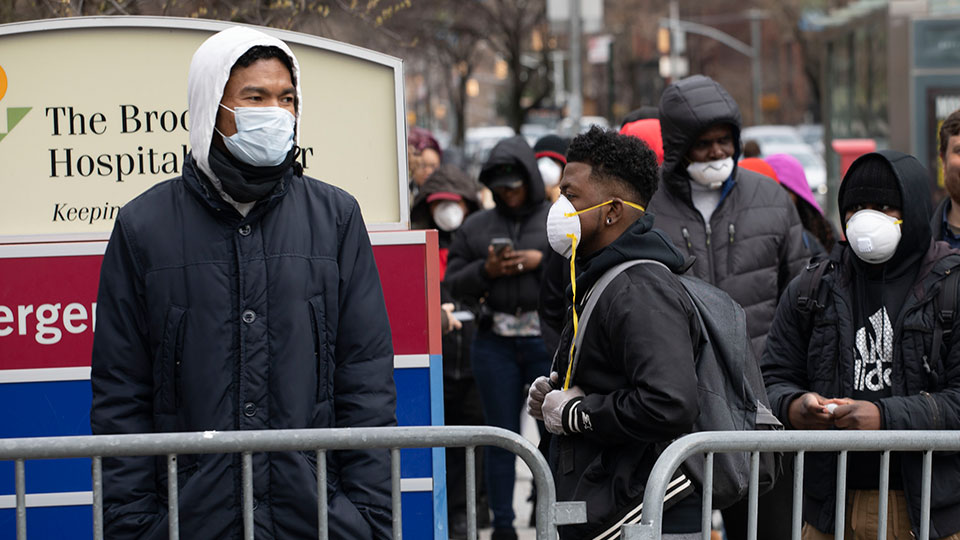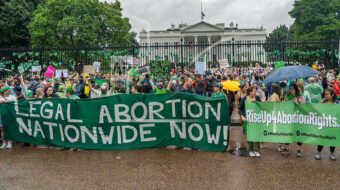
United States of Care is a non-partisan non-profit group working to build and mobilize a movement to improve health care. It is made up of patients, caregivers, advocates, clinicians, policymakers, and business, civic, and religious leaders. It is headed by Andy Slavitt, former acting administrator of the Centers for Medicare and Medicaid Services under President Barack Obama. He was a leader of the team behind Healthcare.gov, the website for Obamacare. Also known as the Affordable Care Act, the bill turns 10 years old on March 23. When millions are losing their health coverage as a result of layoffs, Texas Republicans and the Trump administration are still trying to overturn ACA. The COVID-19 response plan below was crafted by United States of Care.
COVID-19 is a public health crisis unlike anything our country has faced in recent memory, with a set of circumstances requiring a large, immediate, and continual public policy response from Congress and the federal government. A big crisis requires a big response, one that will meet immediate needs and sustain people through one of the most challenging times they will face. Congress must act to minimize the death toll and provide financial support for many Americans facing job loss.
Upcoming legislation should seek to achieve the following five goals:
-
Provide a significant, sustained commitment to support front-line medical workers, and to treat them as a protected class for the duration of declared federal and state emergencies.
-
Allow Americans the financial wherewithal to withstand up to 18 months of isolation and job loss; the ability to social distance will have a direct impact on the expected death toll.
-
Support the health care costs of Americans who are afflicted with COVID-19 and impacted by the economic downturn, and by extension provide financial support for states, hospitals, community health centers, and other health care institutions.
-
Protect the most vulnerable Americans from COVID-19: people with underlying chronic medical conditions, those living in close quarters or otherwise unable to practice social distancing, and seniors–especially those in nursing homes.
-
Put the full resources of the entire nation to their maximum use in order to respond to pressing medical and public health infrastructure needs.
We have spoken to states, policymakers, experts, providers, and citizens. From their advice, we are presenting a list of the most immediate needs we see surfacing now and what we expect to emerge in the coming weeks. We must move forward with solutions that will ready our economy and health care system to respond to this crisis. While the cost will be significant, we believe the total cost of not doing this is far, far higher. Many of these provisions should be only temporary, expiring at the end of the relevant emergency period. We have an imperative to act swiftly and provide assurance to citizens, states, health care professionals, and vulnerable families.
Priority #1: Sustain the health care system capacity and workforce needed to address the immediate crisis.
Meeting the medical needs that our nation will face in the coming months will require augmenting and sustaining our system and the health care providers that power it. Hospital beds and equipment achieve nothing without the medical personnel to care for patients. Front line medical personnel are taking on great personal risk to provide care for those falling ill and will be asked to sustain long hours and difficult working conditions in the days and weeks ahead.
The biggest issues that we will face in sustaining this workforce are: keeping them healthy; keeping them emotionally and mentally strong; providing them areas of seclusion and respite while they care for patients; and enabling them to be present by caring for their families. Congressional actions should:
> Provide a $5,000 bonus payment to frontline medical workers and first responders every month of the duration of a declared emergency in the state in which they are practicing. These frontline medical workers are facing tremendous personal risk by caring for COVID-19 patients; in the SARS epidemic of 2000, for example, 20% of those infected were health care workers. For the purposes of the $5,000 bonus payment, frontline medical workers should include physicians, nurses, physicians assistants, nursing assistants, nursing home staff, health care facility workers who come into direct contact with patients, and the mental health care professionals supporting and treating their frontline medical colleagues. This additional compensation will help these critical workers cover individual child care or other family care, as well as other needs they may face as they work extended hours.
> Use creative approaches to rapidly expand the health care workforce.
– Temporarily loosen licensing and scope of practice requirements as needed.
– Provide National Guard, Department of Defense, Veterans Affairs, and other federal clinical backup support.
– Allow medical schools—at their judgment—to allow students to play certain clinical roles as designated by the hospital.
– Provide federal funding for free and expanded mental health services to front line health care workers.
– Rapidly train and allocate the Public Health Service Corps to states in need.
> Repurpose excess capacity in our existing community resources.
– Any financial assistance to the hospitality industry should require them to make available a percentage of open rooms to local health systems, health departments, or hospitals. Hotel room capacity could be used to:
– Quarantine COVID-19 patients not in need of intensive or specialty care.
– House patients waiting on test results in order to free up hospital beds/capacity for others who need it; emergency Medicaid/Medicare funding would be necessary for hospital systems to cover the care that would need to be provided.
– Provide rooms to health care providers who need to avoid infected family members or to avoid potentially exposing their own families.
– Housing for individuals experiencing homelessness who are at high-risk for COVID-19.
– Require health plans, Medicare Advantage, and Medicaid plans to reimburse and cover care as “in-network provided” at facilities that are repurposed to treat COVID-19 patients for the duration of the emergency.
Priority #2: Economic support to sustain a long-duration of social distancing and job loss.
As Congress considers direct payments to individuals and assistance for small businesses, it is important to remember that this relief serves a dual purpose. Financial relief allows everyday people to survive long term unemployment, while enabling the social distancing necessary to reduce the spread of the virus and save lives. Economic support should include:
> Monthly sustained payments through the unemployment system that automatically renews. People who must remain at home for long periods of time to protect their health or the health of someone they live with will require ongoing financial assistance for as long as 18 months. We can’t ask people to make the difficult choice between protecting their health and their financial security. Congress should be prepared to authorize continued financial assistance for the duration of the pandemic to those who must remain at home.
> Federal support for COBRA premiums so that laid off workers have the ability to maintain their current source of employer-sponsored coverage. The federal government could provide full support for COBRA premiums for laid off workers to ensure continuity of care.
Priority #3: Support the health care costs for those impacted by COVID-19 and the economic downturn, including patients, health care providers, and states.
The coming weeks and months will bring significant health care challenges, both for those who contract COVID-19 and require health care, and for those whose access to care is threatened or disrupted as a result of hospital overcapacity or job loss. Reliable access to affordable care is critical during a public health emergency, and there are several common sense steps that would protect health care for those who need it:
> Create a new optional Medicaid eligibility category for anyone diagnosed with COVID-19. This would allow states to enroll anyone diagnosed with the disease in an expedited fashion. The enrollment process should be modeled on presumptive eligibility for pregnant women and, like that program, be open to all people regardless of citizenship status.
> Eliminate all COVID-19 related balance billing. With ICU treatment and experimental treatments potentially needed, COVID-19 care could get very expensive for patients very quickly. Prevent surprise bills arising from the diagnosis and treatment of COVID-19 so people don’t risk financial devastation after they receive needed care.
> Accelerate coverage of vaccines and treatments. Require health insurers to cover a COVID-19 vaccine and any new treatments found to be effective with no cost-sharing, and dedicate funding to make these available to people who are uninsured.
> Increase financial support for states. States will be facing unprecedented budget shortfalls just as a surging need for health care and other services strain their budgets further. States and localities are on the front lines of this response, and must have the resources they need to take care of their residents. The federal government should guarantee that any revenue loss directly associated with this crisis is off-set by transfer payments from the federal government. The recently approved modest increase in Medicaid FMAP rates for states doesn’t go far enough, and additional Congressional action is required.
> Encourage states to expand their Medicaid programs on a temporary basis. Allow states that have not yet expanded Medicaid to do so for the duration of the national emergency with 100% federal match (FMAP), and provide that same 100% FMAP to states that have already expanded Medicaid. This will provide states with financial relief and immediate access to health care for populations who are currently uninsured.
> Ease Medicaid enrollment and re-enrollment. Allow all state Medicaid and CHIP agencies to create a streamlined enrollment pathway, and temporarily halt redeterminations for currently enrolled individuals by temporarily instituting continuous eligibility. Not only will continuous eligibility help ease the burden for enrolled individuals facing other challenges related to COVID-19, but it will also allow state Medicaid and CHIP agencies to focus on enrolling and providing coverage to new enrollees.
Priority #4: Protect and serve the populations most at-risk from COVID-19.
Early research shows that 80% of deaths from COVID-19 in the United States occur in people ages 65 years or older, with the highest percentage among people 85 years or older, and people with certain chronic conditions are at higher risk as well. In addition, the rate of fatality for the elderly diagnosed with COVID-19 is far higher than the fatality rate for younger Americans. We must take every step to protect this population by finding and supporting innovative ways to provide the health care, food, socialization, and other support they need directly to their homes or remotely with technology. Congress should:
> Send funding to states and municipalities to build a new kind of health care and social service workforce. The system will be strained not only by the needs of COVID-19 patients, but the ongoing needs of elderly and other high risk people being advised to stay home, leaving them without their usual access to community and supportive care. Communities should have the flexibility to design their own responses, which could include:
– Corps of community health workers working with patients telephonically or virtually.
– Bonuses to retain home health care workers needed to care for people with disabilities now, and who will be in demand as recovering COVID-19 patients are discharged.
– Creating and training a new corps of displaced workers or people verified to have COVID-19 antibodies that make them immune to COVID-19 willing to be trained to fill emerging gaps in the health care system, including working with people in their homes.
– Allow states to quickly disburse these grants to the most qualified organizations.
> Expand tele-health and the use of technology in order to receive safe, quality care at home. As Americans continue to adhere to social distancing guidelines, the entire country is moving online to do what have always been face-to-face interactions. CMS has already relaxed certain restrictions on this practice for Medicare, and Congress could also:
– Create flexibility to promote and reimburse tele-health and virtual/telephonic communications for covered Medicaid State plan benefits, including behavioral health treatment services.
– Grant the authority to relax the Ryan Haight Act, or the DEA can provide a waiver which would allow psychiatrists to prescribe controlled substances without requiring an initial in-person visit every 24 months. This would allow psychiatrists to help those struggling with mental health issues as quickly and safely as possible.
– Fund technology to enable remote visiting. As medical buildings, hospitals, senior communities and nursing homes close to visitors, family and friends have no way to visit or participate in their loved one’s health care. Congress could create grants to health care providers for technology to enable virtual visiting and discharge planning.
> Ensure access to medication. Require health plans to relax limitations on prescription refills so people can secure a 90-day supply of medications. Insurers should also waive cost-sharing for those with low incomes who may not otherwise be able to afford 90 days of medication at one time.
Priority #5: Put the full resources of the entire nation to their maximum use in order to respond to pressing medical and public health infrastructure needs.
An unprecedented crisis requires a major national response, similar to a major natural disaster or war. We need to develop rapid testing capabilities, a robust supply chain and distribution chain, and create flexibility when necessary to solve problems as they emerge.
– Temporary authority under the War Production Act should be used to meet all of the needs of front-line health care workers for personal protective equipment and other critical supplies like swabs and thermometers, with a backstop for payment by the federal government. Monitor and report on the inventory so new production capability can be created in response to emerging shortages.
– Incentivize the manufacture and distribution of smart thermometers with the capability of uploading data to the cloud.
– Use tax law and patent incentives to encourage the development and production of treatments and promising prevention approaches.
– Guarantee payment for 500,000 ventilators and sustain ongoing manufacturing capabilities.
– Empower the Justice Department to go after those hoarding, price gouging, and profiteering in the supply chain of resources.
– Enlist FEMA to provide mobile medical units that can be brought from state to state.
– Temporarily waive anti-trust and liability rules as necessary that could slow production of test, protective equipment, and other critical supplies.
– Fund a challenge grant to design new technology, launching a national or global challenge to design new approaches to ventilators or protective equipment that can be quickly utilized.
Enacting a large and comprehensive package is critical to reassuring the public and the health care workforce that their needs will be met. Over the coming weeks and months, USofCare will continue to seek out and solicit a wide range of creative solutions that can help our country confront this crisis.












Comments